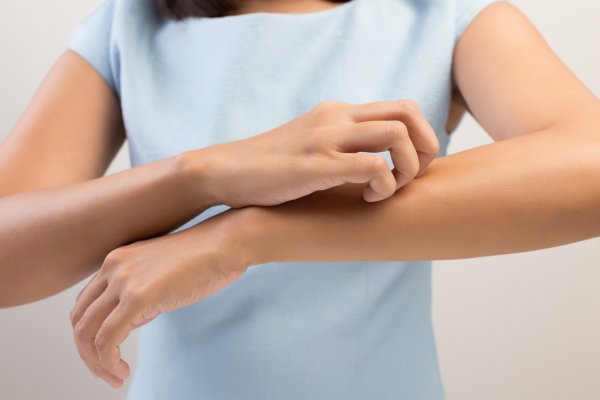The typical image of thickened skin with red, itchy, and bumpy lesions is what comes to mind whenever you picture a case of eczema. This is the most familiar presentation, especially among light-skinned individuals. That said, those with darker skin tones are likely to develop gray, purple, or ashen rashes. But the features of eczema can vary even further, depending on the type.
The precise etiology of eczema remains elusive; however, research suggests that genetics and environmental factors contribute to the development of the condition. If you have asthma, hay fever or any other allergic disorder, you are at a higher risk of developing eczema, probably the atopic type.
Eczema has no cure, and the treatment is primarily symptomatic. If you have moderate to severe symptoms, drugs such as Adbry can help you regain your smooth skin in a few days.
What Are the Types of Eczema?

Up to seven types of eczema exist, including atopic dermatitis (AD), contact dermatitis, dyshidrotic eczema, nummular eczema, seborrheic dermatitis, neurodermatitis, and stasis dermatitis. Let’s look at the three most prevalent types of eczema.
1. Atopic Dermatitis (AD)
Affecting more than 25 million children and adults in the United States alone, atopic dermatitis is the most common type of eczema. The severity of symptoms can vary from one individual to another, but itchiness occurs in nearly 85 percent of cases.
With AD, you can develop skin rashes that often ooze fluid or bleed when scratched anywhere on the body. This breach of the outside barrier (the skin) predisposes you to different infections. Moreover, since the lesions are often itchy, chronic scratching causes the skin to thicken and harden with increased dryness and pigmentation.
Atopic dermatitis usually begins in childhood and persists into adulthood, with or without periods of remission. Although AD is not contagious, implying you cannot catch it from another person, the condition often runs in families.
Typically, atopic dermatitis is a chronic disease with varying severity. Treatment with agents such as corticosteroids and biologics is necessary when the condition is severe. However, most cases are mild and respond well to management strategies such as avoiding particular triggers or stressors, maintaining a healthy diet, getting good-quality sleep, and keeping your skin moist.
When you have moderate to severe eczema that interferes with your daily activities, including disrupting your sleep cycle, topical medications such as steroids and non-steroidal drugs can help relieve the symptoms. For cases that do not respond adequately to these topical prescriptions, the novel agent Adbry can be used in combination with other drugs or alone.
While no cure for AD currently exists, increasing research on the development and progression of eczema is likely to yield new and more effective treatments.
2. Contact Dermatitis
Unlike AD, which is closely linked to conditions like asthma and other allergic disorders, contact dermatitis does not run in families. You can develop contact dermatitis when a substance capable of ‘switching on’ your immune system gets in contact with your skin and induces an exaggerated reaction.
Contact dermatitis can be either irritant or allergic, depending on the nature of the offending agent and the reaction that ensues. Irritant dermatitis results from damage to the skin by corrosive agents such as detergents, soaps, and nickel. On the other hand, allergic dermatitis occurs when your skin contacts allergens such as poison ivy, and a delayed immune reaction follows.
Despite its peculiar development mechanism, the signs and symptoms of contact dermatitis are usually similar to those of other eczema types, except for the burning sensation and blistering.
Those handling chemicals are more prone to developing contact dermatitis. Therefore, if you are a hairstylist, healthcare worker, or mechanic, you are at a higher risk of getting this type of eczema.
The application of topical steroids is the mainstay treatment for contact dermatitis. But for you to prevent future flares, you need to identify and avoid specific triggers.
3. Seborrheic Dermatitis
As a form of chronic eczema, seborrheic dermatitis occurs in areas of the body with multiple sebaceous glands like the scalp, upper back, and nose.
This type of eczema commonly occurs in infants, where it resolves spontaneously, and adults of ages 30-60 years. Certain medical conditions, including HIV, acne, psoarisis, epilepsy, Parkinson’s disease, and eating disorders, are associated with a higher propensity of developing seborrheic dermatitis. Stress, hormonal alterations, and weather changes can trigger episodes of seborrheic eczema.
In adults, seborrheic dermatitis presents as red, scaly, and greasy rashes on oily areas of the skin such as the scalp, armpits, or eyebrows. In contrast, infants usually present with a cradle cap on the scalp.
Treatment of seborrheic dermatitis aims at eliminating the scales and minimizing inflammation and itching. You can achieve this by using skin emollients or a zinc-containing cleanser with a moisturizer.
Conclusion
Moderate to severe eczema can cause significant distress and disrupt your daily activities. Whenever you develop itchy, red, and scaly lesions anywhere on your body, seek medical attention promptly. Prescriptions such as Adbry are essential in alleviating the distressing symptoms of eczema.








